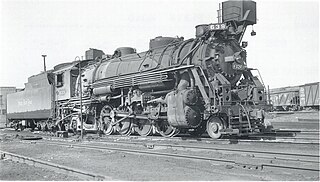| Year | Quantity in service at start of year | Quantity retired or scrapped | Numbers | Notes |
|---|
| 1925 | 145 | 3 | 3026, 3028, 2039 | to SP&S 500, 501, 502 |
| 1926 | 142 | 1 | 3099 | to SP&S 503 |
| 1928 | 141 | 2 | 3039, 3043 | to SP&S 504, 505 |
| 1929 | 139 | 2 | 3023, 3024 | to SP&S 506, 507 |
| 1943 | 137 | 2 | 3064, 3121 | to SP&S 508, 509 |
| 1944 | 135 | 3 | 3108, 3122, 3134 | to SP&S 511, 510, 512 |
| 1946 | 132 | 1 | 3113 | Wreck retirement |
| 1948 | 131 | 3 | 3049, 3086, 3107 | |
| 1949 | 128 | 10 | 3005, 3010, 3014, 3048, 3092, 3094, 3098, 3111, 3128, 3143 | 3128 Wreck retirement, scrapped on site |
| 1951 | 118 | 6 | 3015, 3016, 3018, 3046, 3074, 3091 | 3018 retirement date; scrap date unknown |
| 1952 | 112 | 29 | 3002–3004, 3007–3009, 3011, 3019, 3022, 3027, 3031, 3032, 3038, 3041, 3047, 3053, 3055, 3057, 3060, 3068, 3070, 3072, 3079, 3082, 3084, 3088, 3093, 3102, 3131 | 3011 and 3019 retirement dates; scrap date unknown |
| 1953 | 83 | 36 | 3001, 3013, 3017, 3020, 3021, 3025, 3033–3035, 3040, 3051, 3056, 3058, 3061, 3063, 3065, 3069, 3073, 3078, 3080, 3085, 3087, 3095–3097, 3104–3106, 3110, 3118, 3123, 3124, 3127, 3132, 3141, 3142 | |
| 1955 | 47 | 29 | 3006, 3030, 3036, 3037, 3042, 3052, 3054, 3062, 3066, 3067, 3071, 3075, 3076, 3081, 3083, 3089, 3090, 3100, 3103, 3109, 3114, 3115, 3125, 3126, 3130, 3133, 3136, 3137, 3140 | |
| 1956 | 18 | 2 | 3077, 3116 | |
| 1957 | 16 | 10 | 3000, 3012, 3045, 3050, 3059, 3112, 3117, 3119, 3120, 3139 | 3120 scrapped 1957; 3059 donated 1958; 3000, 3012, 3045, 3112, 3117, 3119 scrapped 1962; 3050, 3139 scrapped 1963. |
| 1958 | 6 | 6 | 3044, 3101, 3129, 3135, 3138, 3144 | 3129 scrapped 1962, others scrapped 1963. |















